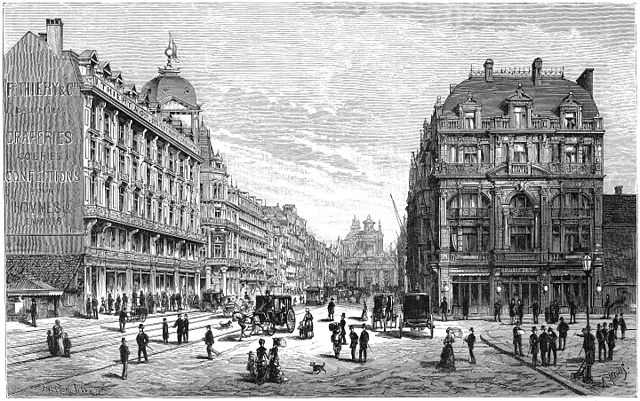The Boulevard Adolphe Max or Adolphe Maxlaan (Dutch) is a central boulevard in Brussels, Belgium. It was created following the covering of the river Senne (1867–1871), and bears the name of Adolphe Max, a former mayor of the City of Brussels.
Narrow, triangle-shaped building on the Boulevard Adolphe Max/Adolphe Maxlaan
Cheering civilians ride on Cromwell tanks as British troops enter Brussels, 4 September 1944
Maison des Chats or Hier ist in den kater en de kat (Beyaert, 1874)
Hotel Atlanta (Polak, 1925–1929)
Central Boulevards of Brussels
The Central Boulevards are a series of grand boulevards in central Brussels, Belgium. They were constructed following the covering of the river Senne (1867–1871), as part of the major urban works by the architect Léon Suys under the tenure of the city's then-mayor, Jules Anspach. They are from south to north and from west to east: the Boulevard Maurice Lemonnier/Maurice Lemonnierlaan, the Boulevard Anspach/Anspachlaan, the Boulevard Adolphe Max/Adolphe Maxlaan, and the Boulevard Émile Jacqmain/Émile Jacqmainlaan.
Looking upwards the Boulevard Anspach/Anspachlaan near the Place Fontainas/Fontainasplein
Destruction of the old neighbourhood and beginning of the vaulting in 1867
The Boulevard Anspach/Anspachlaan in 1880, etching by Armand Heins from L'Illustration nationale
The Place de la Bourse/Beursplein and the Boulevard Anspach in the 1920s








